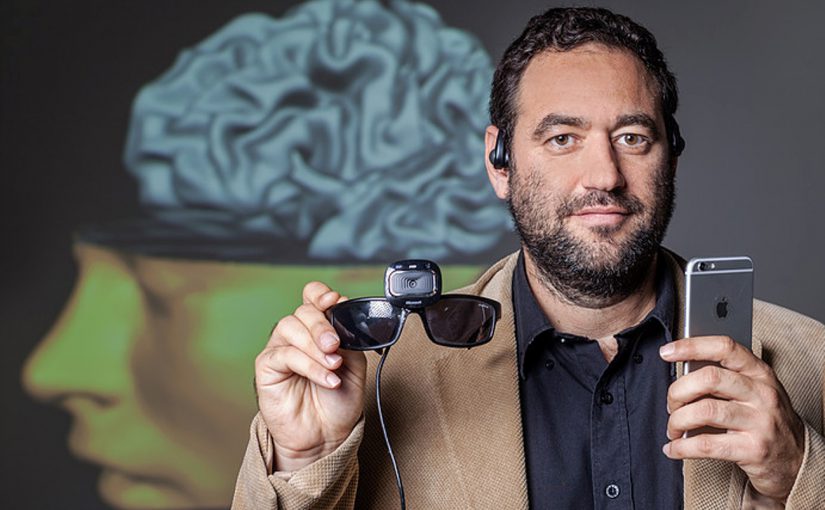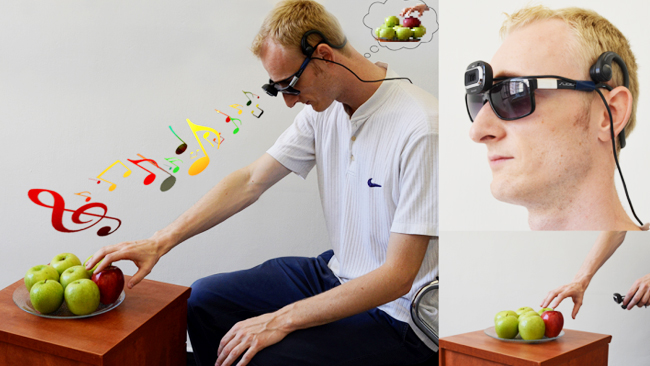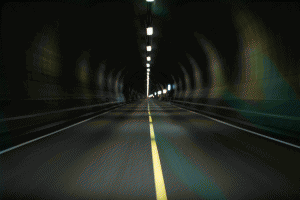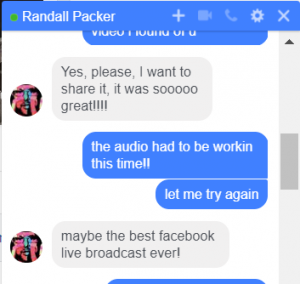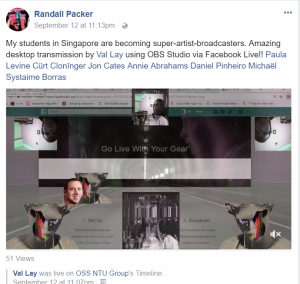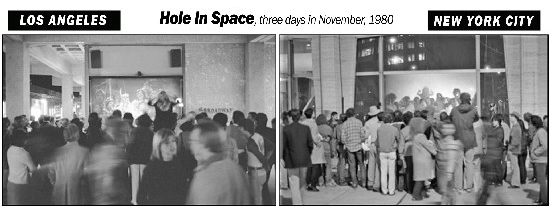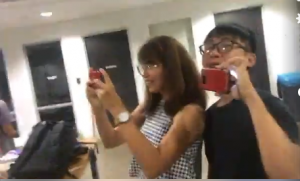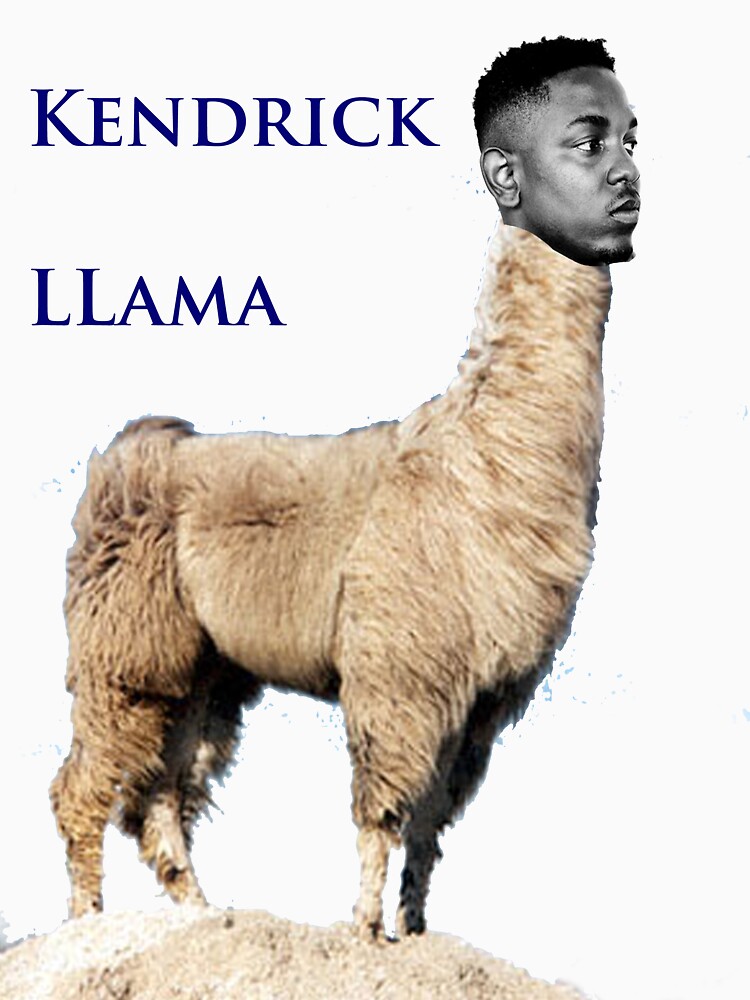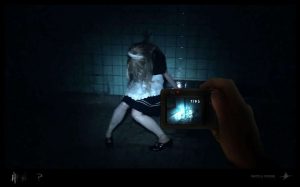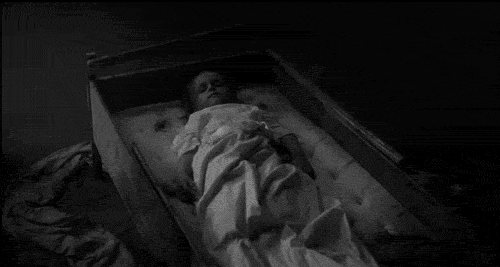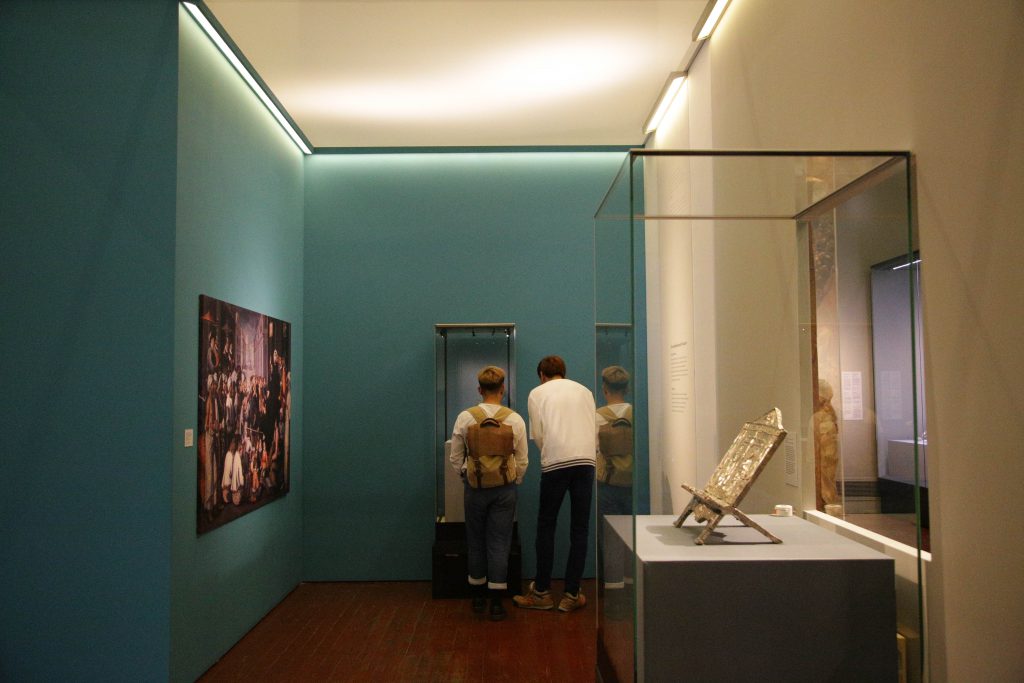Hole in Space (1980) is a quintessential piece that highlights the possibility of a performance platform that has no geographic boundaries happening in real time. I find the title of video, ‘mother of all video chats’ a very apt name indeed, given that it was the very first large screen teleconferencing in history.
Through its medium in telecommunication, it involves the audience in voluntary two-way interaction. These interactions are spontaneous, unrehearsed and natural, which captured the beauty of it as no one knew what to expect – be it the audience or the artists themselves. No signs or announcements were made for this public piece and furthermore, it was the first of its kind in history. Watching such videos actually made me feel glad that these moments were captured and recorded in its most honest form, as I find content like this is hard to come by these days.
On a deeper level, a reason why Hole in Space was picked up by the media in a matter of days or regarded as a successful piece for expansion is the work’s ability to capture audience on an emotional level.

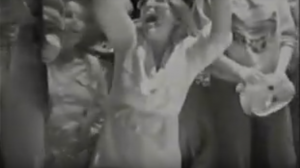
Screen grab of Hole in Space excerpt featuring ecstatic lady as she sees her relative on a large screen in real-time. Second image features another lady on her left looking really shocked by her reactions
One of the clip shows an overwhelmed lady expressing her endearment for her mom that she misses as she kneels and waves to the other screen. At one point, she spots another family member and goes all hysterical as she smacks the ground in euphoria. It was said that families and friends drove from various areas to this site in order to see, hear and converse with loved ones three thousand miles apart.
Here, we see the desire of human beings to connect or even re-connect with people. Specific to this case, people were seen eager to reach out to another party physically thousand of miles away, and conversing normally as if meeting each other upfront. Through this interaction, both parties have collaboratively come together to create a performance in this third space, tearing down the traditional walls of having a sole performer reaching out to a viewer.
“A virtual space creates social situations without traditional rules of etiquette. The absence of threat of physical harm makes a person braver”

Screen grab of lady flirting openly with man and immersing in casual talk
Another part of the video shows a lady and a man, one in Los Angeles and the other in New York City, flirting with each other through the screens. They even exchanged numbers openly. With regards to the quote, indeed people do interact differently on a third space as compared to face to face meetings as we very well know about the physical boundary.
Hence in this case, the lady knows that she isn’t under any physical threat, therefore her body language and things she say become rather bold. Also depending on individual and cultures, it would be rather weird to give someone your number and start flirting upon the few moments of meeting them face to face. In this third space, the lady and man have indeed broken the traditional rules of etiquette, by being a tease towards each other.
In designing such spaces, we look not only at their qualities and aesthetics, but how people interact when they are disembodied and their image is their “ambassador”
Essentially, this telecommunications piece has exemplified the breaking boundaries of the physical space to have a many-to-many interaction and also forming new ways of interaction between people in a third space. These interactions have broken conventions of physical ones and formed a new ways of interacting (mainly more boldly) when in the virtual space.
Collective Narratives
In relation to collective narratives, it was first explored by Ernie Kovacs and Steve Allen in the early 1950s. They explored composite images as they wanted to find out the relationship between aesthetics and sense of presence in shared performance/multimedia environment, where people do not leave their indigenous environments. This whole project of Hole in Space is an example itself of a collective narrative. People of different cultures and backgrounds were coming on this shared performance space without leaving their indigenous environments. Their “ambassador” image comes off more brave and highly honest, and most importantly their performance are unscripted. Therefore, this brings out some characteristics of individuals that they might not be comfortable to show in a physical situation.
Additional research
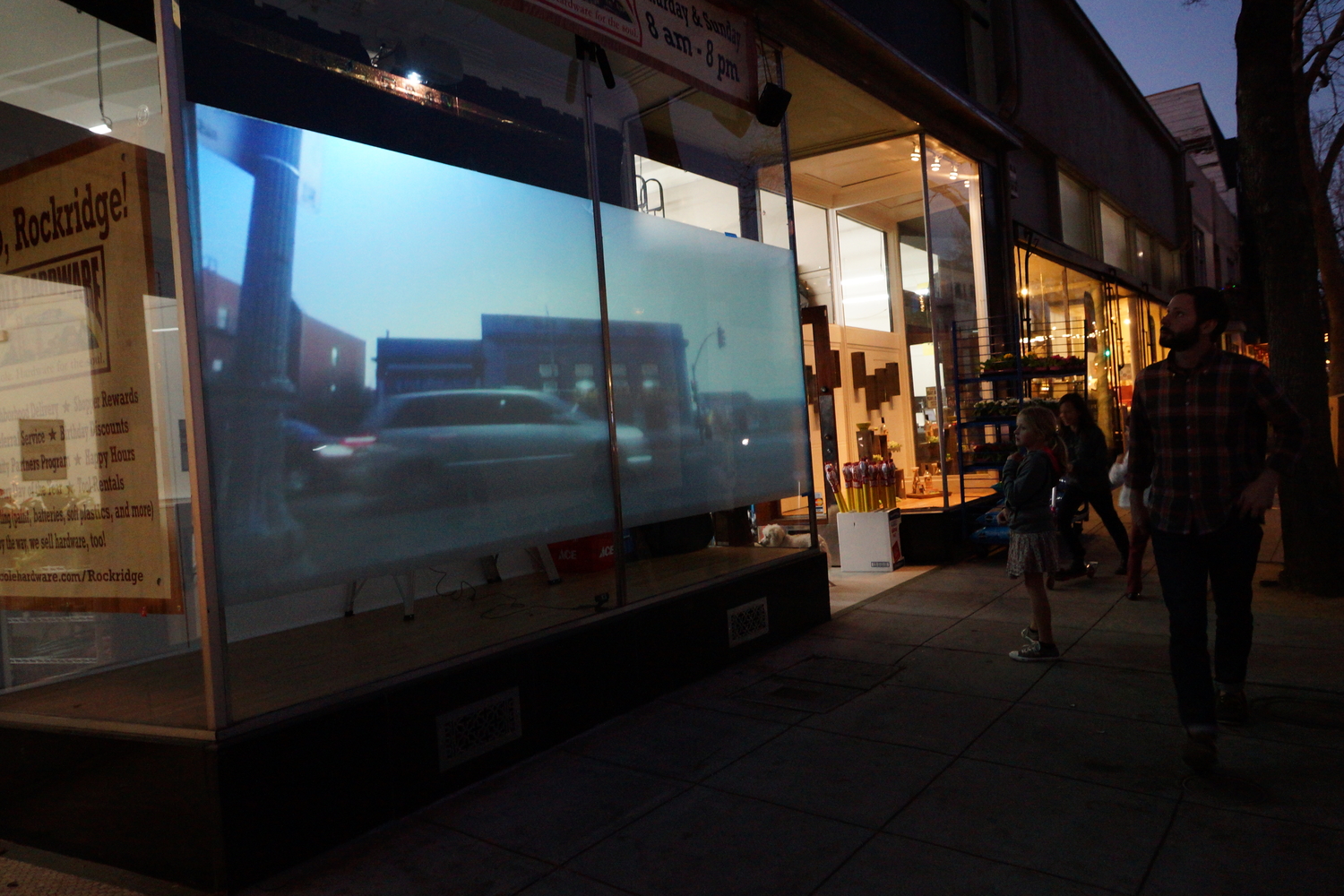
Hole in Space (2015). Image from http://www.aholeinspace.com/project-3
Hole in Space (2015) is a remake by Maya Gurantz & Ellen Sebastian Chang, inspired by the work of Galloway and Rabinowitz. Similarly, they did not have any public announcement on Twitter, Instagram or Facebook or press releases about it.
Video “portals” were installed between distinct Oakland neighborhoods that are close geographically but very much different socioeconomically. In their own words “attempting to provide a portal of mutual acknowledgement and understanding–a counterpoint to the city’s current accelerated gentrification and concurrent economic unrest.”
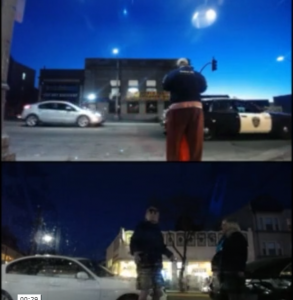
Screen grab of Hole in Space (2015) passer-bys attempting to communicate, both from different states in Oakland
People were seen exchanging few short sentences of ‘How ya doin?’ or ‘Which part are you guys from?’ across the screens. I’ve noted that reactions and interactions were not as great as its predecessor and that wasn’t surprising as high-speed bandwidth and large screen teleconferencing wasn’t new in 2015.
However, what remained the same was that people were still bold in their actions they made before the screen.
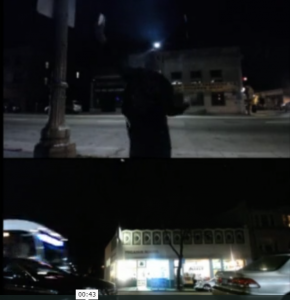
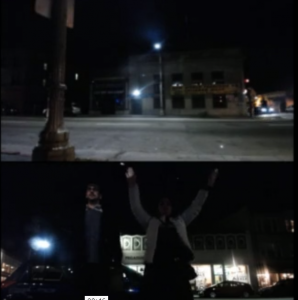
Screen grab of video showing a man dancing while the other follows suit. They are separated miles away but still in the same state of Oakland
In the virtual space, people were seen dancing and shaking their body mimicking one another – this isn’t something people normally do in a physical space. Hence, the new ways of interaction that birthed through teleconferencing did not change 40 years later.
“If you define the aesthetic of the medium, by defining the essence and integrity of the medium, then the creation of “good art” in the case of telecommunications, means you create a situation that provides some form of communication between people and maximize communication between people and maximises the technology’s capabilities”
References:
http://www.aholeinspace.com/project-3
“A Hole in Space” by Kit Galloway (1980)


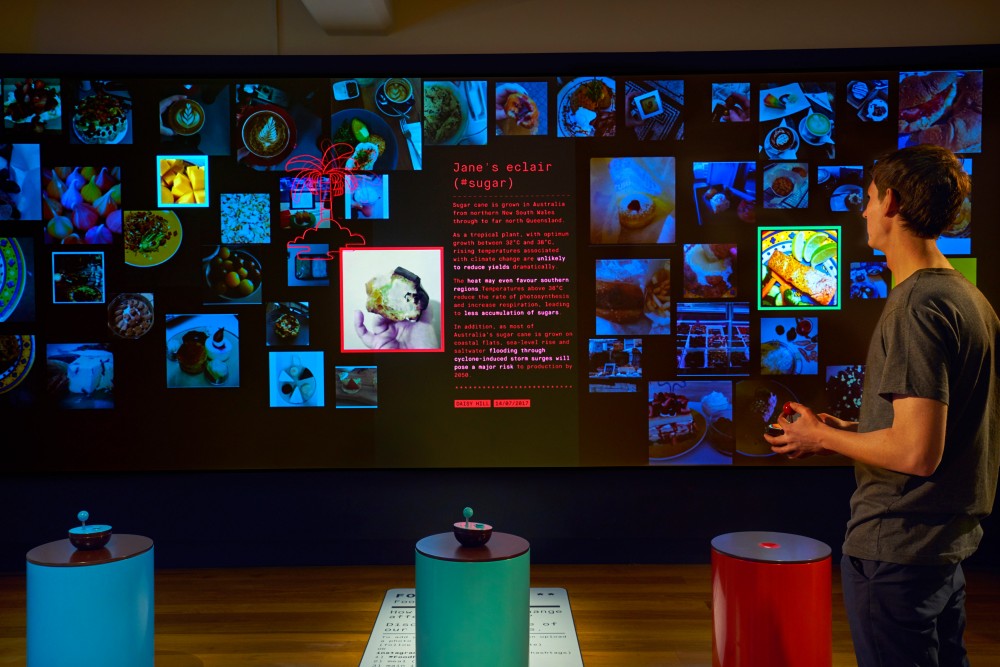
![]()

















